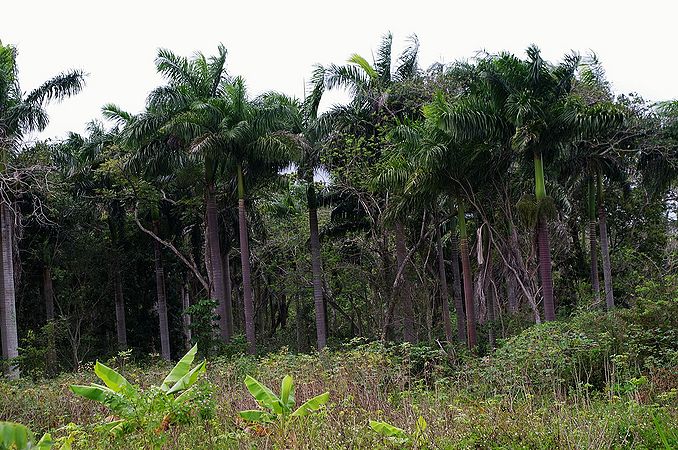 Guantanamo.- Dozens of seeds of Purple Creole Palm, (Roystonea violacea), a critically endangered endemic species of Cuba, multiply in a nursery created in the Featured Natural Element Cañón del Yumurí, a protected area belonging to the Baracoa Municipality.
Guantanamo.- Dozens of seeds of Purple Creole Palm, (Roystonea violacea), a critically endangered endemic species of Cuba, multiply in a nursery created in the Featured Natural Element Cañón del Yumurí, a protected area belonging to the Baracoa Municipality.
The small plants are then transferred to polyethylene bags until they grow to 30 cm tall and are planted directly in the field, the specialists from the Flora and Fauna Base Business Unit of that municipality, explained.
Roystonea violácea is a species that has been altered since the times of Spanish colonization, a period in which plantations of sugar cane, coffee, bananas were grown. Therefore, the populations of Purple Creole Palm were reduced to isolated plant.
As a consequence, it is estimated that currently there are only about 300 species dispersed in cultivated areas of the municipalities Baracoa and Maisí, where experts monitor the palms to determine the conservation status of the species.
Hydrometeorological phenomena such as tropical cyclones, drought, as well as the change in the use of the soil for agricultural purposes and lack of knowledge about the Purple Creole Palm, also transformed its original habitat.
Guantánamo is currently the Cuban province with the greatest diversity of palms per unit area and one of the provinces with the greatest endemism of the woody monocotyledon, a food source for various fauna species such as the catey and the mockingbird.
Translated by Liubis Balart